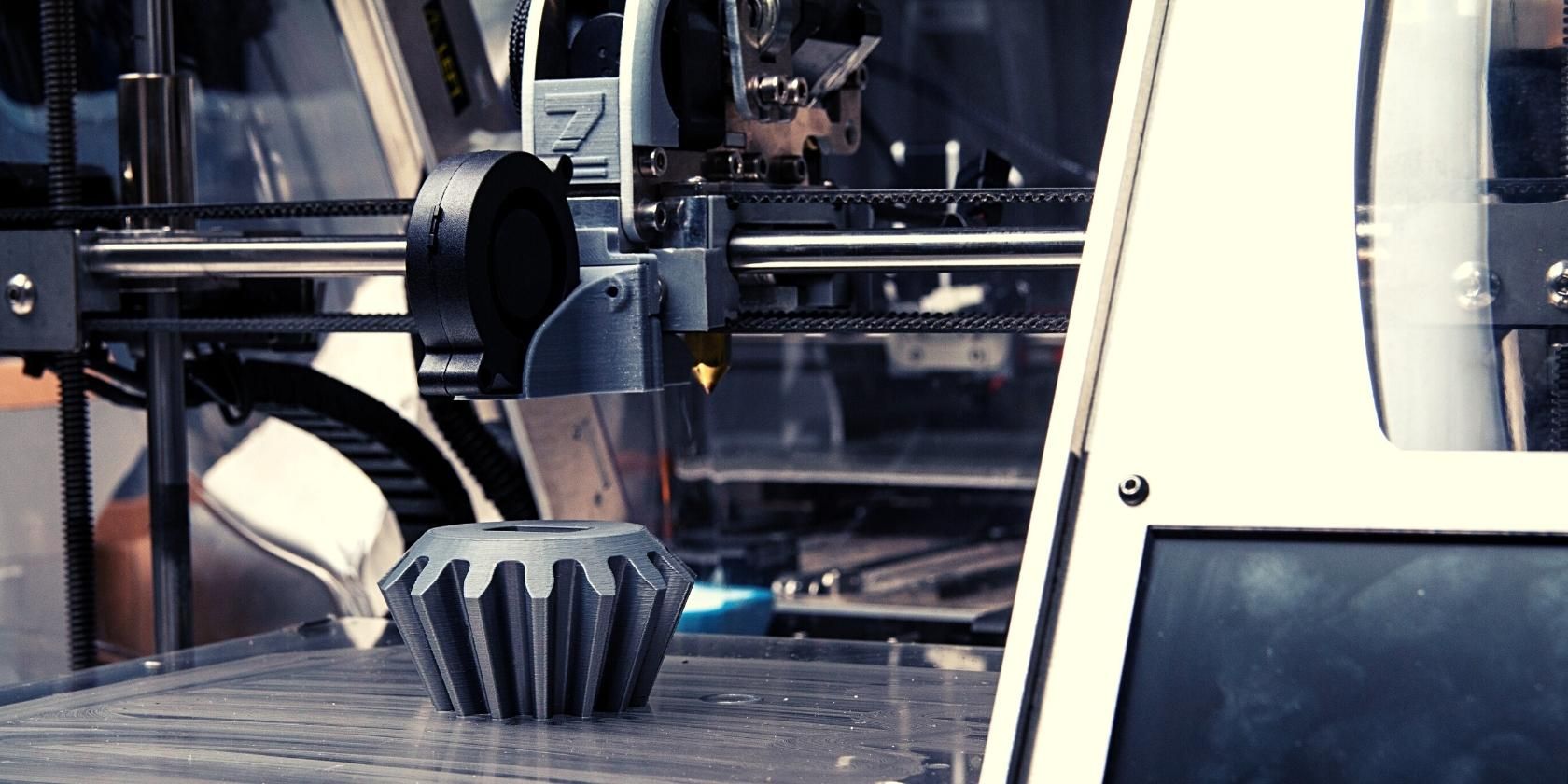3D printing is used in almost all industries, including automotive, construction, dentistry, and jewelry. However, the quality of your 3D prints can be influenced by the 3D printing technology you use.
There are many 3D printing technologies you can use to create 3D-printed objects. The common ones include Stereolithography, Selective Laser Sintering, and Fused Deposition Modeling.
This article discusses the types of 3D printing technologies.
1. Stereolithography (SLA)
Stereolithography or SLA is one of the earliest 3D printing technologies, and it’s still in use today. The technology utilizes the vat photopolymerization process to make 3D objects.
In SLA, an object is made by exposing a photopolymer resin to light, usually UV light. The process involves pointing a laser beam across a tank (vat) of liquid photopolymer, selectively curing and hardening it, and building it up one layer at a time.
Parts printed using this technology are usually dimensionally accurate with smooth surface finishes, though they include support structures. SLA is used in the aerospace, automotive, and medical industries, to mention a few.
2. Selective Laser Sintering (SLS)
Selective Laser Sintering (SLS) is a type of 3D printing technology based on the powder bed fusion process. This technology is predominantly industrial and is ideal for complex geometries, including negative and interior features, undercuts, and thin walls.
Sintering is the process of making a solid mass of material by heating it, but not to the point of melting. The heat source is a powerful laser used to sinter powdered thermoplastics to form functional parts. A commonly used material in SLS is nylon.
Both SLS and SLA are based on the powder bed fusion process and have a similar method of operation. But unlike SLA, SLS doesn’t need support structures as the workpiece is surrounded by unsintered powder. Also, SLA parts are generally tougher than SLA and have rougher surface finishes than the latter.
3. Fused Deposition Modeling (FDM)
FDM, sometimes referred to as Fused Filament Fabrication (FFF), is a popular 3D printing technology that uses the material extrusion process. The technology is one of the most cost-effective methods for producing custom thermoplastic parts and prototypes.
An FDM printer makes objects by layering extrusions of molten thermoplastics via a moving, heated nozzle onto the build platform, where it cools and solidifies. Though usually functional, the finished objects tend to have rough surface finishes and require additional processing and finishing.
FDM is one of the most widely used technologies for home desktop printer models. For instance, you can use an FDM printer to print tabletop miniatures at home.
FDM is one of the few 3D printing technologies that use production-grade thermoplastics to print parts that have great thermal, chemical, and mechanical attributes. Thermoplastic filaments used include polyethylene terephthalate (PET), Polylactic Acid (PLA), and Acrylonitrile Butadiene Styrene (ABS). Common applications of FDM include 3D printing buildings and making 3D desserts.
Metal Binder Jetting (MBJ) is a 3D printing technology that uses the binder jetting process to fabricate metal objects. Binder jetting forms objects by selectively depositing a binding agent over a bed of powder material.
In MBJ, a binding agent is deposited by printing heads on a metal powder bed, producing objects with complex geometries. The binding agent “glues” the metal powder together within and between layers.
To create an object, layers are deposited on top of each other until the desired object is complete. Once this is complete, you’ll need to implement post-processing techniques, like sintering or infiltration, to produce functional metal objects.
You can use this technology with various materials (sand composites, ceramic powders, and acrylic), provided the binder effectively joins them. Binder jetting also allows you to add color pigments to the binder to produce print parts in full color.
Metal binder jetting is a fast process. However, it creates parts with a grainy surface finish that are not always suitable for structural parts. Because of this, the technology is ideal for 3D metal printing and low-cost batch production of functional metal parts.
5. Digital Light Processing (DLP)
Digital Light Processing or DLP is a vat polymerization technique. The 3D printing technology works with polymers and is very similar to SLA. Both technologies form parts layer-by-layer using light to selectively cure the liquid resin in the vat.
Once the parts are printed, you’ll need to clean them of excess resin and expose them to a light source to improve their strength. Like SLA, DLP can be used to create parts with a high level dimensional accuracy.
The two technologies also feature similar requirements for support structures and post-processing. Their major difference is the light source; DLP uses more conventional light sources, like arc lamps.
DLP can also work with a small amount of resin to produce accurate parts, saving on material and running costs. Sometimes, however, 3D prints fail. The good news is that you can always recycle failed 3D prints.
Both DMLS and SLM are similar to SLS, except these technologies use metal powder instead of plastic to create parts. The process uses a laser to melt the metal powder particles, fusing them layer-by-layer. Typical materials used include copper, titanium alloys, and aluminum alloys.
Unlike SLS, both DMLS and SLM need support structures because of the high temperatures required during the process. You can remove the support structures in post-processing.
In addition, both SLM and DMLS end products tend to be stronger and with great surface finishes. One notable difference is that DMLS only heats the metal particles to the point of fusion while SLM completely melts them. Another difference is that DMLS can form parts from metal alloys while SLM produces single element parts, like titanium.
What Is the Best 3D Printing Technology for Your Project?
There are several factors to consider when choosing the technology for 3D printing, including the required material, visual or physical characteristics of the final object, and functionality.
Each 3d printing technology has its strengths and weaknesses that make it more suitable for particular projects.
The most commonly used 3D printing technologies are stereolithography (SLA), Selective Laser Sintering (SLS), and Fused Deposition Modeling (FDM). This article covers the different types of 3D printing technologies available to help you choose the technique that best matches your requirements.

